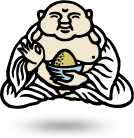Nuss Wasser
Posted by Jer Thorp on Friday, November 14th, 2008Tags for this Article: alcase, alcohol, aperitif
It strikes me that the world can be divided neatly into two groups: Those who would willingly taste the contents of a poorly labeled, dusty bottle of homemade brown liquor and those who would not.
My girlfriend and I fall into the former group; my parents to the latter. As a result, last December, I found myself pouring myself a glass of a 4-year-old brown liqueur from a tall bottle hand-labeled ‘Nuss Wasser’. Apart from the name, the label gave me a few other insights into what I was about to drink. I knew that it was ‘from Roby’s garden’. I knew it was bottled in November of 2003, and I knew that it came from ‘Marlenheim’. That seemed like certification enough to me, so I bravely took a taste.
Let’s back up a little. My parents live in Sidney, British Columbia, which is a small town on the South tip of Vancouver Island. Their house is tucked into a quiet community known as Deep Cove, home to a few thousand people, a few more thousand trees, and some of the best ocean views South of the Queen Charlottes. It is also, curiously, home to one of the best and least-known restaurants in Canada. The Deep Cove Chalet is located on 6 acres of lawn-covered ocean-front property. Aptly called ‘unconventional’ on the restaurant’s website, Chef Pierre Koffel has been preparing exceptional French cuisine for those in the know for decades. The restaurant uses local ingredients, bakes its own bread, paté, and desserts, and smokes its own salmon. If you have any doubts that the Chalet is an exceptional spot, a glance at the wine list should take care of that.
My parents have been no strangers to the Chalet over the years, and Chef Pierre is not one to ignore regular customers. He has provided chauffeured rides home in his classic Rolls, poured birthday drinks from his wine reserve, and delighted us with his hand-made truffles at the end of meals. And, bringing us back to our story, he has at least once given my father a strange bottle of liqeur.
We know, then, how the bottle got into the liquor cabinet. But how did it get to Deep Cove? I turned back to the label on the bottle for clues.
Marlenheim, as it turns out, is in France. If you are thinking it sounds more German than French, though, you’d be correct – it sits along with similarly-named communes like Breuschwickersheim, Goxwiller, and Hunspach in the Bas-Rhin (lower Rhine) area of Alsace. A former villa of Frankish kings, Marlenheim was beseiged by the Swedish during the Thirty Years War. The Swedes were a trusting lot, and according to historians liked their liquor – legend has it that a whole contingent of them were knifed to death by locals after a night of drinking. Could it be that this mysterious bottle contained the very same drink that saw the end of these sloshed Scandinavians?
While it may have been bottled in France, ‘nuss wasser’ is certainly named by germans. Literally translated as ‘nut water’, it’s a kind of wine which is made with green walnuts. It is a popular regional apéritif in Alsace, though it seems to have become more scarce in recent years as walnut trees have disappeared. Green walnut wine is also made in Provence, where it is called Vin de Noix – where this differs from Nusswasser, I can’t begin to guess.
With the regional location and basic ingredients in hand, I wondered what could be done with the remaining piece of information on the bottle – the name ‘Roby’. Surprisingly, my Google searched weren’t fruitless. As it turns out, there is a Michelin-starred restaurant called Le Cerf, owned by a Robert and Michel Husser. Robert (Roby) Husser was the original chef at Le Cerf, though kitchen duties in recent years have been inherited by his son Michel.
So, there you have it. It turns out that this seemingly innocuous bottle gathering dust in the shelf above my parents’ stove had quite a pedigree. Grown in the garden of a Michelin-starred chef, it somehow made it to Canada and into my glass. How did it taste? Delicious. With a strong nutty flavour , and alcohol well-balanced with sweetness, it was everything that an aperitif should be. But don’t take my work for it. If you have a green walnut tree somewhere nearby, you can try some yourself:


